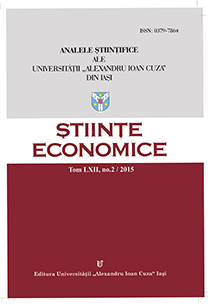Bond yield spreads in the Eurozone
Bond yield spreads in the Eurozone
Author(s): Denisa Proksová, Mária BohdalováSubject(s): Supranational / Global Economy, Transformation Period (1990 - 2010), EU-Approach / EU-Accession / EU-Development, Financial Markets
Published by: Editura Universităţii »Alexandru Ioan Cuza« din Iaşi
Keywords: bond spread; bond yield; Euro Area; monetary union; EMU;
Summary/Abstract: Euro Area sovereign bond yield spreads fell significantly after the creation of the monetary union and moved in unison until the recession of 2008, when investors’ risk pricing changed considerably. Rising bond yield spreads caught the attention of economists who tried to find the factors influencing their size. Evolution of bond spreads was mostly related to various macroeconomic factors as well as the soundness of the countries’ banking sectors and a general level of risk aversion in the financial markets. Analysis presented in this paper compares bond yield spreads of Euro Area member countries and relates them to their debt levels as well as the liquidity of the securities and a general level of risk aversion. Apart from the usual variables, we also analysed differences in purchasing power to assess the impact of the common monetary policy in the pre-crisis period. After adjusting the model to better explain movements of linear regression residuals, we could not prove a systematic assessment of the above-mentioned factors except for time periods of high market volatility. We explain sudden changes in the importance of idiosyncratic factors as consequences of policies of the European Central Bank and other European Union institutions following such time periods, which, as our analysis suggests, distorted pricing of risk in the markets.
Journal: Analele Ştiinţifice ale Universităţii »Alexandru Ioan Cuza« din Iaşi. Ştiinţe economice
- Issue Year: 62/2015
- Issue No: 2
- Page Range: 221-239
- Page Count: 19
- Language: English

